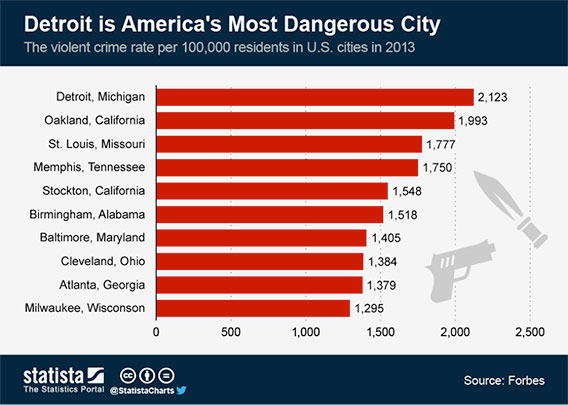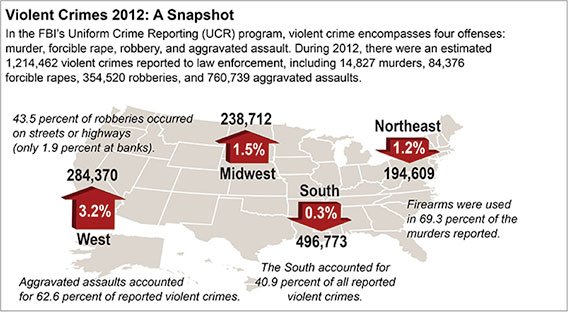The huge surge in the U.S. incarceration rate since passage of a tough federal anti-drug and violent crime law in 1994 greatly added to state and federal operating budgets but also coincided with a major reduction in serious crimes.
With more and more lawmakers and officials clamoring to impose tougher prison sentences on drug offenders and violent criminals, the nation’s imprisonment rate rose by 24 percent while crime declined 40 percent.
Federal and state authorities were spending on average $30,000 a year to incarcerate and care for a single prisoner. Overall, state and federal governments are pouring more than $80 billion a year into the prison system with expectations of a continued payoff in terms of lower crime rates.
Related: State Prisons Break Away from Soaring Cost Trends
But a new study by the Pew Charitable Trust released on Friday indicates that states that continue to fill up their prisons are getting a diminished return on their investment, while states that have scaled back their incarceration rates actually are seeing greater reductions in their crime rates.
The five states that reduced their imprisonment rates the most between 1994 and 2012 – New York, New Jersey, California, Maryland and South Carolina – have seen their crime rates plummet by an average of 45 percent, according to the study. In contrast, the five states that increased their imprisonment rate the most – West Virginia, North Dakota, Idaho, Oregon and Wisconsin – have experienced an average reduction in their crime rates of 27 percent.
“Despite the conventional wisdom, states are showing that it is possible to cut incarceration rates without comprising public safety,” Adam Gelb, director of Pew’s Public Safety Performance Project, said in a statement. “The crime bill paid billions for new prisons but with nearly 1 in 100 American adults behind bars, we’ve reached a point of diminishing returns.”
“There’s now a broad bipartisan consensus behind alternatives for lower-level offenders that cost less and do a better job cutting recidivism.” Gelb added.

Prevention vs. Incarceration
What’s not included in the Pew study is information about preemptive crime prevention. All five states that saw the greatest reduction in crime while reducing incarceration rates had implemented the highly controversial “stop-and-frisk” policy in cities with high crime rates.
Stop and frisk was a by-product of the 1982 “broken windows theory” of crime, developed by two social scientists. The idea was that a single broken window could lead to unbridled vandalism or worse unless the neighborhood is monitored and maintained. It was embraced by Mayor Rudy Giuliani in the early 1990s when crime in New York City was rampant.
The early and continued success of stop and frisk led other big cities to mirror the program. In 2011, the NYPD stopped almost 700,000 mostly black and Hispanic New Yorkers. But only 12 percent ended in an arrest or summons, The Atlantic reported. In the first half of 2014, the NYPD recorded a 92 percent drop in stop-and-frisk after the city’s newly elected mayor de Blasio made a campaign promise to end the racial targeting.
The NY Daily News reported, “The sharp stop-and-frisk decline in 2014 came with a bump in the number of shooting victims, with 822 reported through Aug. 10 — an increase of 11.7 percent.
The 1990s Crime Wave
The national movement toward tougher and longer prison sentences was officially launched with passage of the Violent Crime Control and Law Enforcement Act of 1994. Many lawmakers and state officials shocked by an epidemic of crack cocaine distribution and use focused on imprisoning convicted drug offenders and other dangerous criminal for longer periods.
The growing heroin epidemic in the U.S. could spark new enforcement measures. On Wednesday, federal agents and local police in Los Angeles uncovered over $65 million in laundered money from Mexican drug cartels. The cartels are going to want their money back, which usually means more kidnappings and ransoms paid. And let’s not forget our breaking bad meth labs.

Over the past 25 years, the Bureau of Prisons has seen a staggering 800 percent increase in its population, with more than 219,000 inmates behind bars – and almost half serving time for drug-related offenses. Almost a quarter of the world’s prisoners – or 1.57 million individuals – are incarcerated in U.S. prisons, according to Justice Department data.
Related: Eric Holder Calls a Truce on the War on Drugs
But that is all changing. In light of the mounting cost of incarcerating and caring for prisoners - especially providing health care for an aging population – there has been an unmistakable shift away from a long-term policy of mass imprisonment.
With a sharp decline in the demand for crack cocaine and a reduction in trafficking, Attorney General Eric Holder last year called for a major curtailment of stiff federal penalties for drug convicts.
Many factors besides longer prison sentences have contributed to the 40 percent decline in crime nationally between 1994 and 2012. There is evidence, for example, that putting more police on the streets and community oriented policing services in the mid-1990s deterred crime. If states couldn’t afford that cost, they defaulted to incarceration, which also reduced crime. In addition to stop-and-frisk, a record peacetime expansion of the economy in the 1990s gave many an alternative to a life of crime.
Related: State Prisons Break Away from Soaring Cost Trends
“The best we can say is that mass incarceration had a significant but not overwhelming impact on crime, accounting for perhaps 10 to 25 percent of the reduction,” according to Richard Rosenfeld, a professor at the University of Missouri and one of eight scholars who advised Pew on its study.
Steven Raphael, professor of public policy at the University of California at Berkeley, told Pew, “As you increase the number of people you put behind bars, you dip into a population that is increasingly less criminally active, so the benefits of incarceration diminish.”
The Pew study stressed that states have experienced varied results in cutting or raising their imprisonment rates. For example, while New York cut its imprisonment rate by 24 percent since 1994 and Florida has increased imprisonment by 31 percent, both states have seen the same reduction in the crime rate: 54 percent.
Effective community policing could have allowed New York to cut their prison rate and save money on that end. But they added significantly to their police force in order to do it.
Top Reads from The Fiscal Times:
- The Threat That Could Scar the Economy for Decades
- Gun Tourism in U.S. Is Booming
- The Army’s New Handgun: A Weapon for Criminals?

